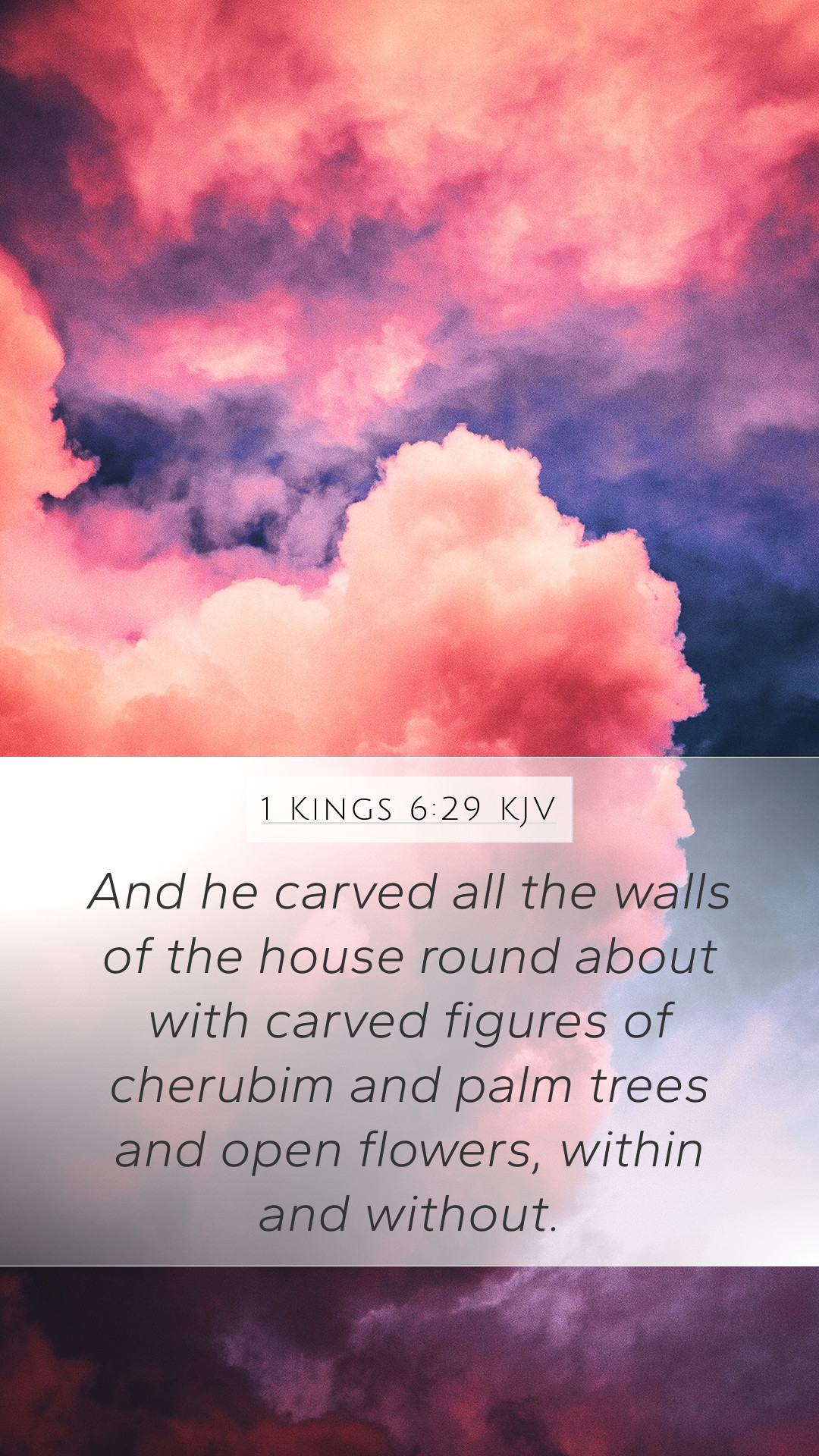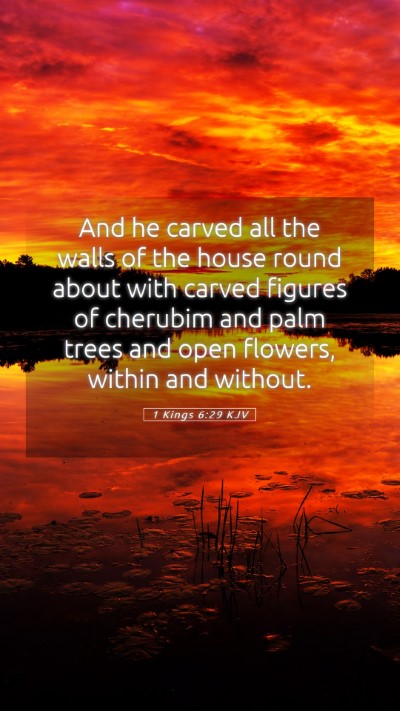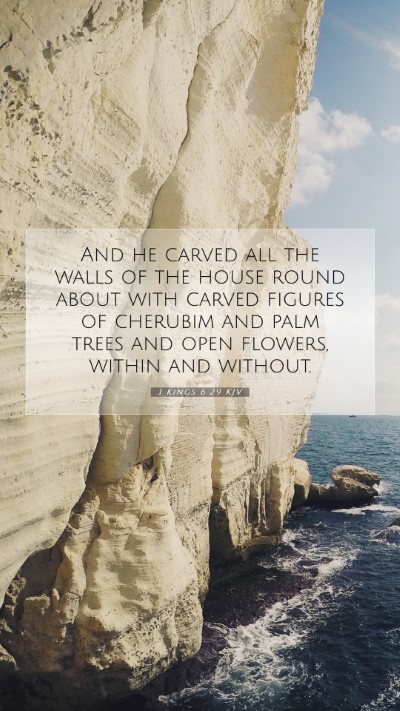Bible Verse Commentary: 1 Kings 6:29
1 Kings 6:29 states:
"And he carved all the walls of the house round about with carved figures of cherubims and palm trees and open flowers, within and without."
Understanding 1 Kings 6:29
This verse describes the intricate artistry and craftsmanship that characterized Solomon's temple. The imagery of cherubim, palm trees, and flowers symbolizes both the divine presence and the beauty of creation. Let's explore the meanings and interpretations provided by prominent public domain commentaries.
Meaning of the Verses
- Matthew Henry: Henry emphasizes that the carvings serve to elevate the temple as a sacred space. The cherubim symbolically represent angels, reflecting God's holiness and the divine protection surrounding the worshippers. The palm trees and flowers depict the life and fertility of the land, showcasing God's goodness and bounty.
- Albert Barnes: Barnes discusses the significance of cherubim as guardians of the sanctity of God's dwelling. He highlights that the detail in the carvings contributed to the aesthetic and spiritual experience, creating an atmosphere conducive to worship. The emphasis on nature with palm trees and open flowers speaks to the joyfulness and tranquility one finds in God's creations.
- Adam Clarke: Clarke notes that the artistry reflects the glory of God and the intended splendor of the temple. He suggests that these motifs are symbolic of the paradise that humanity was originally designed to inhabit, indicating a return to intimacy with God through worship in the temple.
Biblical Exegesis
The verse provides a look into the artistry that was crucial to worship in ancient Israel. Through biblical exegesis, we can see that the elaborate designs on the temple walls serve multiple purposes:
- Spiritual Significance: The presence of cherubim reminds worshippers of the heavenly realm and encourages reverence for the divine.
- Cultural Reflection: The motifs used symbolize the linkage of Israel's identity with natural beauty and divine accompaniment.
- Worship Facilitation: The beauty of the surroundings enhances the worship experience, drawing one's spirit closer to God.
In-Depth Bible Verse Analysis
Analyzing this verse contextually reveals a rich tapestry of meaning:
- The artistic elements can be viewed as a foreshadowing of the New Testament theme of God's desire to dwell among His people.
- The use of flora represents the life-giving aspect of God, suggesting that worship is not just about rituals but also appreciation for His creations.
- This verse also conveys the importance of aesthetics in worship, affirming that beauty in worship spaces can inspire devotion.
Application to Daily Life
Considering 1 Kings 6:29 in our modern context raises questions like:
- How can we incorporate beauty and intentionality into our worship settings today?
- In what ways do we recognize and reflect upon the creation in our spiritual practices?
- What symbols in our worship remind us of God's presence and goodness?
Cross References
This verse opens the door for deeper exploration of related scripture. Here are some cross-references:
- Exodus 25:18-20: Discusses the creation of cherubim for the Ark of the Covenant.
- Ezekiel 41:18-19: Provides another description of artistic designs in the temple.
- Psalm 92:12-15: Symbolizes the prosperity of God's presence akin to how palm trees represent vitality.
Conclusion
1 Kings 6:29 invites us to ponder the significance of beauty in worship and to understand how each element, from the palm trees to cherubim, weaves together a narrative of God's relationship with His people. Through the combined insights of public domain commentaries, we glean a fuller appreciation of this verse and its application in both historical and contemporary contexts. Engaging with such scripture analysis can enrich our Bible study groups and personal reflections on how we can draw closer to God.
Bible Study Insights
For those looking for Bible study resources, this verse can lead to fascinating discussions about:
- How biblical symbolism informs our understanding of God.
- The impact of art and beauty in religious experience.
- Comparison between the Old and New Testament approaches to the presence of God.


